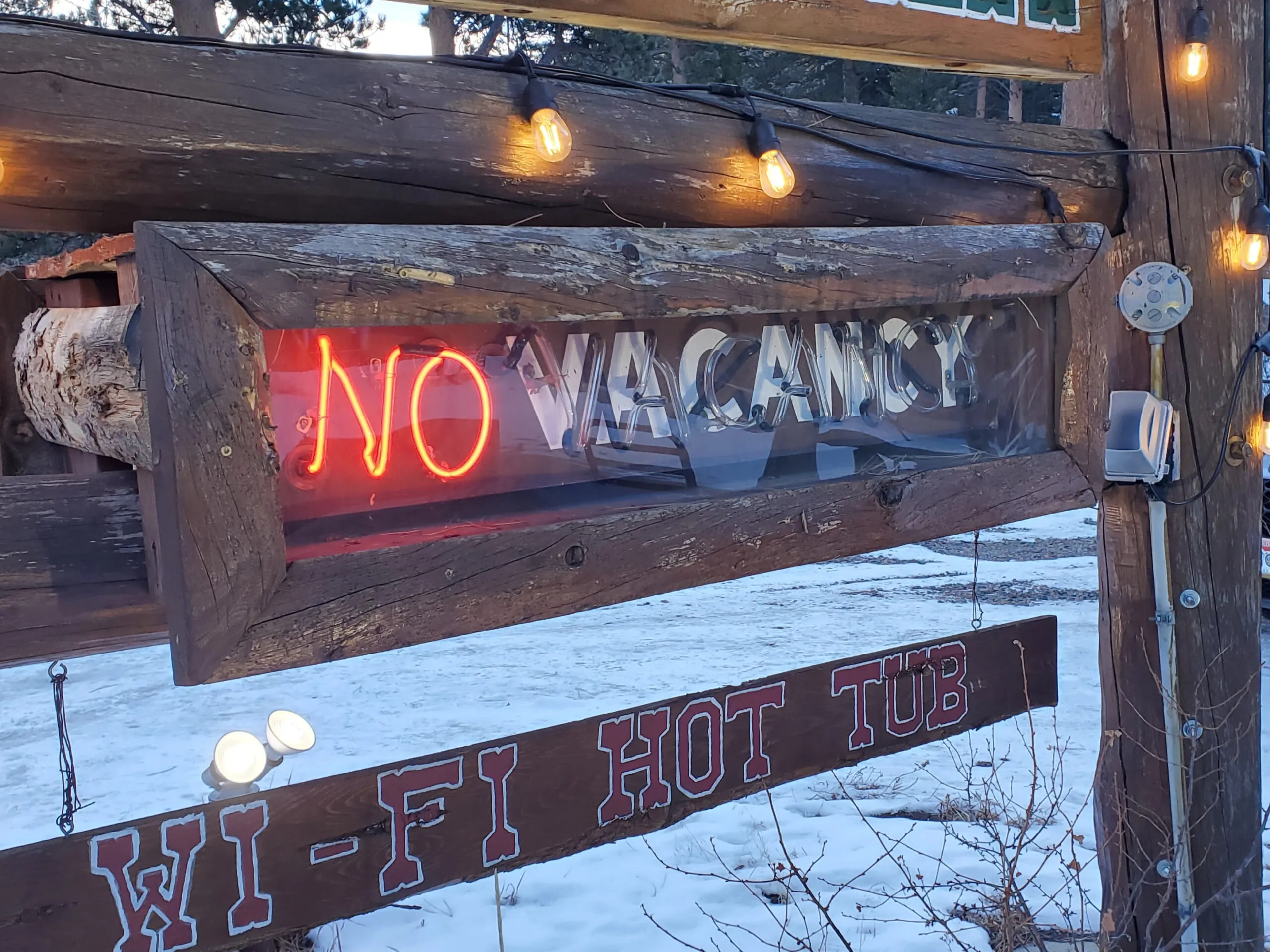Home buyers gain leverage
Numbers say it’s still a seller’s market — but perception is different

Realtors tend to view a housing inventory of six to seven months’ supply as a market that’s balanced between buyers and sellers. Anything below is considered a seller’s market, and anything above, a buyer’s market.
But today’s housing market in the Boulder Valley and Northern Colorado belies that maxim. Even though inventories remain far below that six-month mark, buyers continue to gain leverage, with rising interest rates, inflation and still-high housing prices dampening demand.
“I think it’s pretty clear right now that what we’re feeling out there really resembles this buyer’s market,” said Todd Gullette, managing broker with Re/Max of Boulder. “In a sense, from a practical sense, a buyer is able to look at homes that have been on the market for a number of weeks. They get the due diligence, and their negotiating power back. The seller certainly is not experiencing the feeling, generally, that they’re in the driver’s seat.
SPONSORED CONTENT
“I’m a firm believer of ‘what it feels like,’” he added. “If it feels like a buyer’s market, and you’re a seller, well … you’re probably going to experience this as a buyer’s market.”
Home sales in the Boulder Valley and Northern Colorado enjoyed a boom in the past couple of years, with median sale prices breaking records repeatedly, from Boulder to Greeley, Fort Collins to Longmont.
2022 started off looking a lot like 2021. Appreciation was soaring, inventories were low, multiple offers — sometimes dozens — would come in on a listing, with prices far in excess of list price and some homes selling within days of listing.
Then came two factors that changed the picture dramatically: inflation and mortgage rates.
Inflation sent prices higher for everything from lumber to carpet, household appliances to countertops, and, in the economy overall, for food, energy, clothing. Consumers simply have less buying power.
The market is just correcting itself. We’re not crashing.
Cecilia De Villiers, Shasta Realty Inc.
In response, the Federal Reserve has battled to curb demand by raising the federal funds rate, the rate at which commercial banks borrow and lend their excess reserves to one another. The Fed in November raised the federal funds rate by 0.75 points for the fourth time in a row, with six total rate increases so far in 2022.
“With the movement of rates and the continued increase in price appreciation, that’s kind of been the two-headed monster that has really impacted affordability and really curbed overall buying power and buyer demand out there,” said Brandon Wells, president and CEO of The Group Inc.
The Fed’s actions don’t directly drive mortgage rates, but they do influence what rate borrowers will pay for a home loan. The rate for a 30-year fixed-rate mortgage climbed from 3.22% on Jan. 6 to 7.08% on Nov. 10, according to Freddie Mac.
It’s all served to cool what was a red-hot housing market.
“The market is just correcting itself. We’re not crashing,” said Cecilia De Villiers, broker/owner of Shasta Realty Inc., a Longmont-based brokerage that focuses primarily on Boulder, Larimer and Weld counties. “But the incline that prices went up was way too high, too steep.
“I believe that the transition from where we were in the last couple of years is slowly, hopefully, sinking in with buyers and sellers,” she said. “We are still in a seller’s market, not necessarily saying that things are going fast, but we still have a low inventory.”
Low inventories still favor sellers
Continued low inventories prompted Lawrence Yun, chief economist for the National Association of Realtors, to predict that U.S. home prices won’t experience major declines in 2023.
“For most parts of the country, home prices are holding steady since available inventory is extremely low,” Yun said Friday at the 2022 NAR NXT, The Realtor Experience conference in Orlando, Florida. “Some places are experiencing price gains, while some places, most notably in California, are seeing prices pull back.”
Inventories remain low, but they are edging up as homes stay on the market for longer. In the Boulder Valley and Northern Colorado, inventories have climbed in recent months, according to data supplied by the Boulder-Longmont Realtor Association. Boulder and Longmont recorded inventories of 2.5 months and 2.4 months, respectively, with Broomfield, Fort Collins, Greeley and Loveland recording inventories of 1.6 to 1.8 months.
Although the months’ supply of inventory still falls within the definition of a seller’s market, buyers have more leverage than they did just a few months ago.
And Gullette said he doesn’t expect the inventory numbers to increase much in the coming months, which are typically a slower selling season. And some would-be sellers will simply wait to put their homes on the market.
“I don’t expect that number to climb very much because fewer people are going to list their homes for sale over the winter months,” he said.
Appreciation continues, for now
Median sale prices in October increased compared with a year earlier in Boulder, Broomfield, Fort Collins, Greeley, Longmont and Loveland, according to data from BoLo Realtors, but the pace of increase has slowed.
Greeley, for example, recorded a $414,000 median sales price in October, up just 1.5% from a year ago and down from $453,000 in September.
Loveland’s median sales price in October was $510,000, up 6.3% from a year ago and down from $530,000 in September.
Fort Collins’ median sales price stood at $575,000 in October, up 8.1% from a year ago and down from $592,000 in September.
Broomfield’s median sales price declined to $607,200 in October, from $688,000 in September, but up 2.4% from a year ago.
Longmont posted a $587,500 median sales price in October, up 6.5% from a year ago and down from $645,155 in September.
Boulder showed an increase in its median sales price in October, to $1.37 million, up 11.8% from a year ago and compared with $1.19 million in September.
Jesse Laner, managing broker/partner with C3 Real Estate Solutions LLC, noted that the strong start to the year means that, year-to-date, appreciation in Fort Collins still exceeds 16%, compared with average appreciation of 5% to 6% per year.
But as the year ends, it could be a different story, he said.
“I think by the time we get to the end of 2022, you’re going to see appreciation be less than 16.8% for the entire year, because I think right now, we’re in a market where you’re probably starting to see some depreciation,” he said. “I think the median sales price will start to go down, and you’ll start to see some depreciation.”
Laner said 2022 has been “kind of the tale of two worlds.”
“It started off — the first five, six months — it was gang-busters, kind of an extension of what was going on in 2021, with the multiple-offer situations, the way-over-asking-price offers, waiving all contingencies, very little supply and very, very strong demand. We were just continuing on that frenzy,” he said.
“Then, obviously, interest rates started to rise. That’s the one thing that we’re all aware of, is these interest rates have really gone up. Buyers today, they lost about 40% of their purchasing power with where rates are today versus where they started the year.”
Sellers have to be realistic in pricing
Lower demand has caused would-be sellers to get more realistic on pricing, in some cases reducing their asking price.
The list price of a two-bedroom, one-bath home in Old Town Lafayette on the market for 51 days, for example, was reduced by $35,000, Oct. 24, to $450,000.
The list price for a four-bedroom, three-bath home in Fort Collins was reduced by $40,000, Nov. 4, to $908,000.
And the list price on a four-bedroom, three-bath home in Boulder was cut by $10,000, Nov. 10, to $939,000.
“I do see some properties dropping quite significantly in price now, so hopefully, [sellers are becoming] more reasonable,” De Villiers said.
“I believe that buyers can take advantage of this now. Interest rates are high … but it’s actually still a really good time because a buyer can buy a house now at a much more reasonable price, even below list price. And even though the interest rates are higher, they still can refi as soon as the interest rates drop, which I know they will.”
De Villiers said “common sense” should prompt sellers to see where the market is going
“If a house needs work, they probably will need to do that before they list because buyers are getting picky about that,” she said.
Laner said current conditions give buyers far more leverage than they had.
“If you’re still needing to buy or wanting to buy, you have an opportunity to really call the shots,” he said. “You’re likely not competing with many other offers. You’re able to offer less-than asking price, typically, negotiate seller credits. It has kind of swung back the other way.”
Higher interest rates and inflationary pressures in the economy mean that some would-be buyers simply can’t afford to purchase a home right now. That means that sellers are competing for a limited number of buyers.
“Sellers today have to realize the days of asking whatever you want, regardless of the condition of your property, or regardless of some of the negative aspects of your home, buyers are not going to be coming in, you’re likely not going to get multiple offers, you’re likely not going to see bidding wars, or way over asking price, waiving contingencies,” Laner said. “We’re kind of back to a normal offer environment, just like, in a balanced market, typically you get in offer … slightly under, you negotiate that back and forth. The buyer actually gets a chance to do an inspection. The buyer actually gets a chance to renegotiate if the appraisal comes in low, kind of the way it normally should be.”
But Laner said it’s “still not a bad market for a seller … but that gap is starting to close.”
He said sellers need to realize that it might take longer to sell a home. They need to get the house ready for sale, use good marketing and set a reasonable list price.
“We still expect our listings to sell in two weeks to 30 days,” if the asking price is within reason, he said.
Wells said it takes awhile for changes in market conditions to sink in with sellers, but it’s beginning to happen.
“Sellers today are pretty well aware of the temperament,” he said, noting that sellers are beginning to give more concessions, help buy down interest rates and make improvements to their homes.
“I think that seller understanding and education of the market is still a work in progress, but certainly they are getting much more in tune with where things really are,” Wells said.
Wells said that first-time home buyers are more affected by rising mortgage rates. Buyers of luxury homes typically can access cash to buy down rates, make larger down payments or even make all-cash offers.
“The luxury market has continued to remain pretty resilient and strong,” he said.
Market takes toll on home builders
Wells noted that the current market has begun to take a toll on home builders. Some contracted buyers have had to back out of deals as rising interest rates meant that an under-construction home was no longer affordable.
That’s caused some national and regional builders to cut deals to lure buyers. National builders, he said, have been reducing prices and offering concessions to offload products, or even selling entire product or neighborhood lines to meet financial projections.
Regional builders also are offering interest-rate buy-downs and other concessions, he said.
“They’ve certainly been impacted. They really have been faced with a lot of cancellations,” he said. “As rates rose, and people got concerned about affordability and, could they afford that house, and where would rates be six to eight months after it took to complete the construction, they saw a lot of cancellations, and so in order to offset those cancellations, they’ve had to get creative and offer a lot of concessions as well.”
Where is it heading?
Wells noted that the latest Consumer Price Index showed that inflation in October came in lower than expected, causing mortgage rates to drop below 7%.
“It’s been a very positive move, and a lot of this is predicated on the ‘wait-and-see,’” Wells said. “How quickly will the Fed’s moves have an impact?
“Are the inflationary measures that the Fed’s taking having an impact? Will they have an impact, and how quickly? … The housing market is going to become fairly dependent upon what happens over the next six months in the fight against inflation.”
Laner said that, although the federal funds rate typically is equated with mortgage interest rates, it’s really inflation that drives mortgage rates.
“Until they come back down, it’s going to be a buyer’s market for quite some time,” he said.
Gullette, who recently had an offer accepted to purchase a home, said buyers shouldn’t wait if they find the right house, at the right price.
“If you see the house you like, I would buy that right now,” Gullette said. “If you see the one you like, it still may not be there again. I don’t think we’re looking at another Great Recession here. There are some really frustrated sellers, because some feel like they have missed the market. And now, who knows how long it will stay kind of soft?”
Realtors tend to view a housing inventory of six to seven months’ supply as a market that’s balanced between buyers and sellers. Anything below is considered a seller’s market, and anything above, a buyer’s market.
But today’s housing market in the Boulder Valley and Northern Colorado belies that maxim. Even though inventories remain far below that six-month mark, buyers continue to gain leverage, with rising interest rates, inflation and still-high housing prices dampening demand.
“I think it’s pretty clear right now that what we’re feeling out there really resembles this buyer’s market,” said Todd Gullette, managing broker with Re/Max of Boulder. “In…





